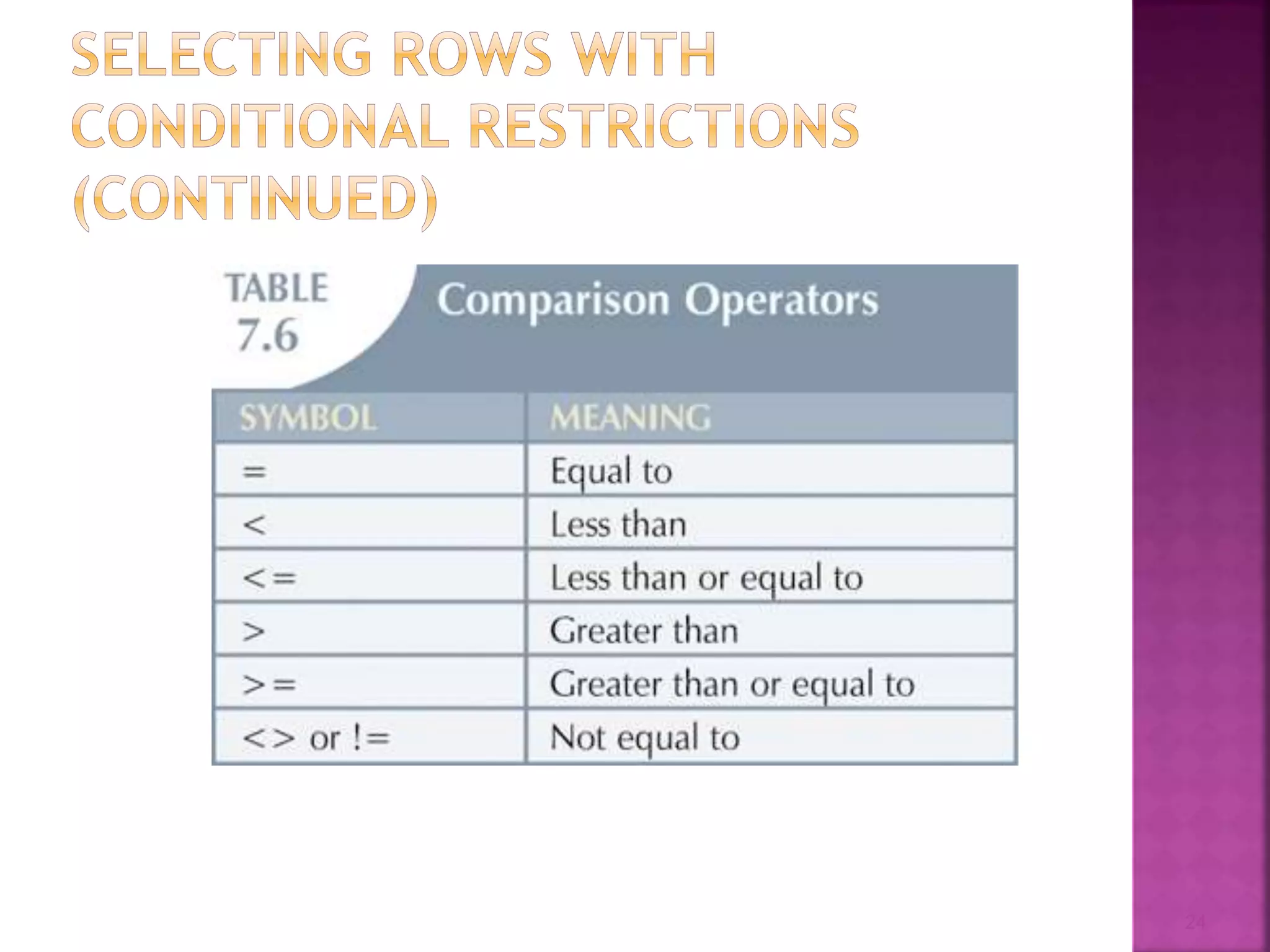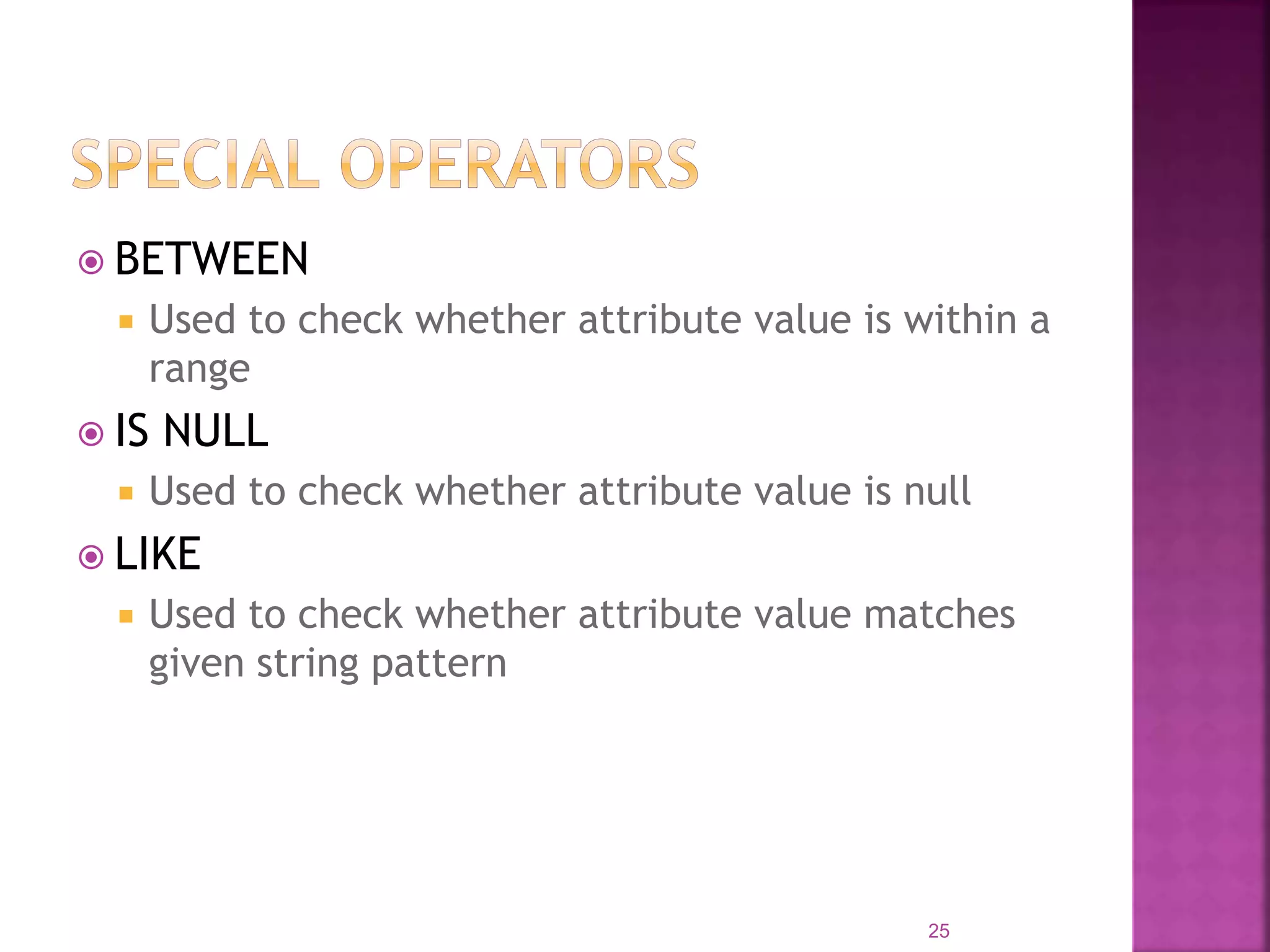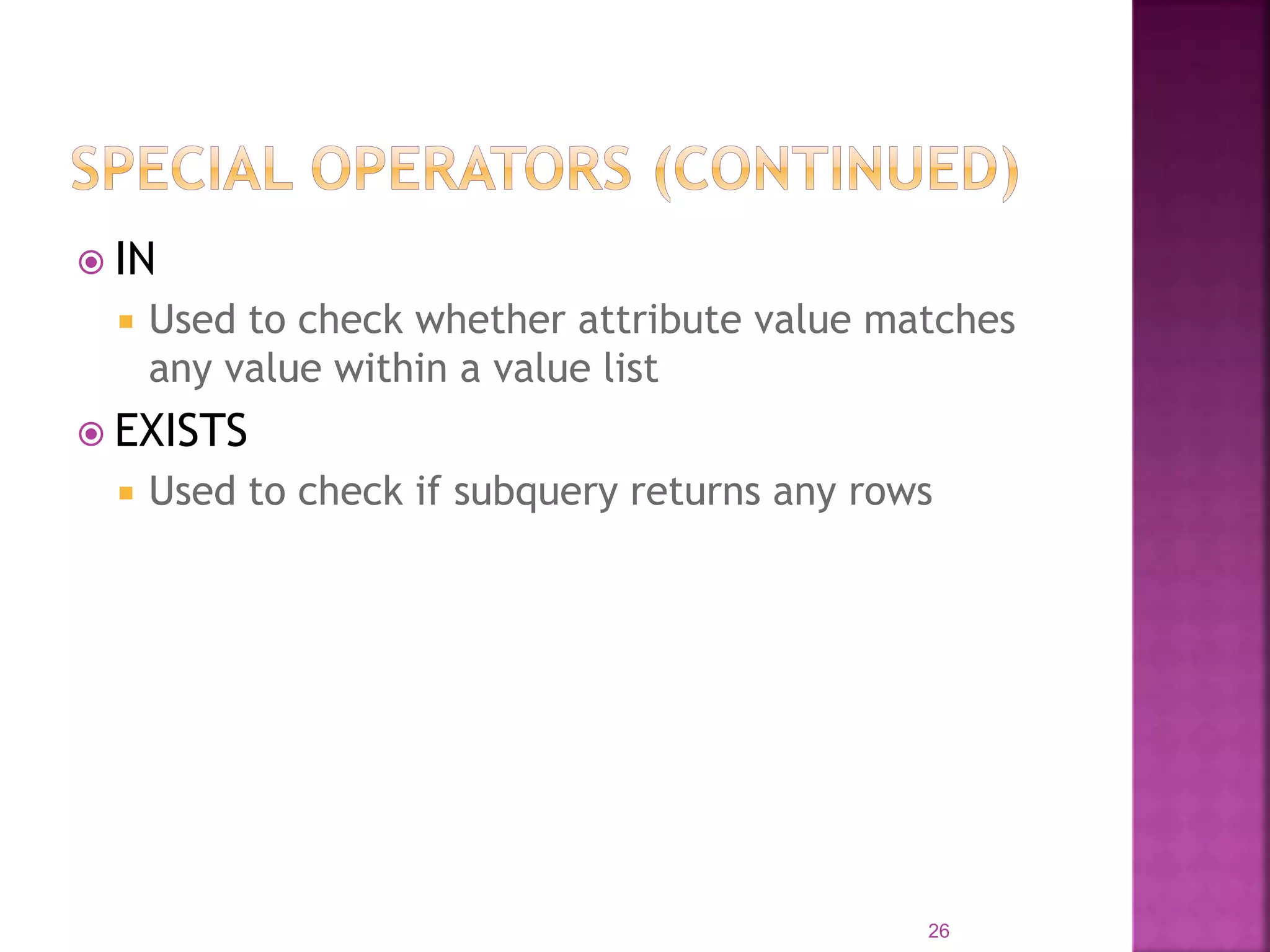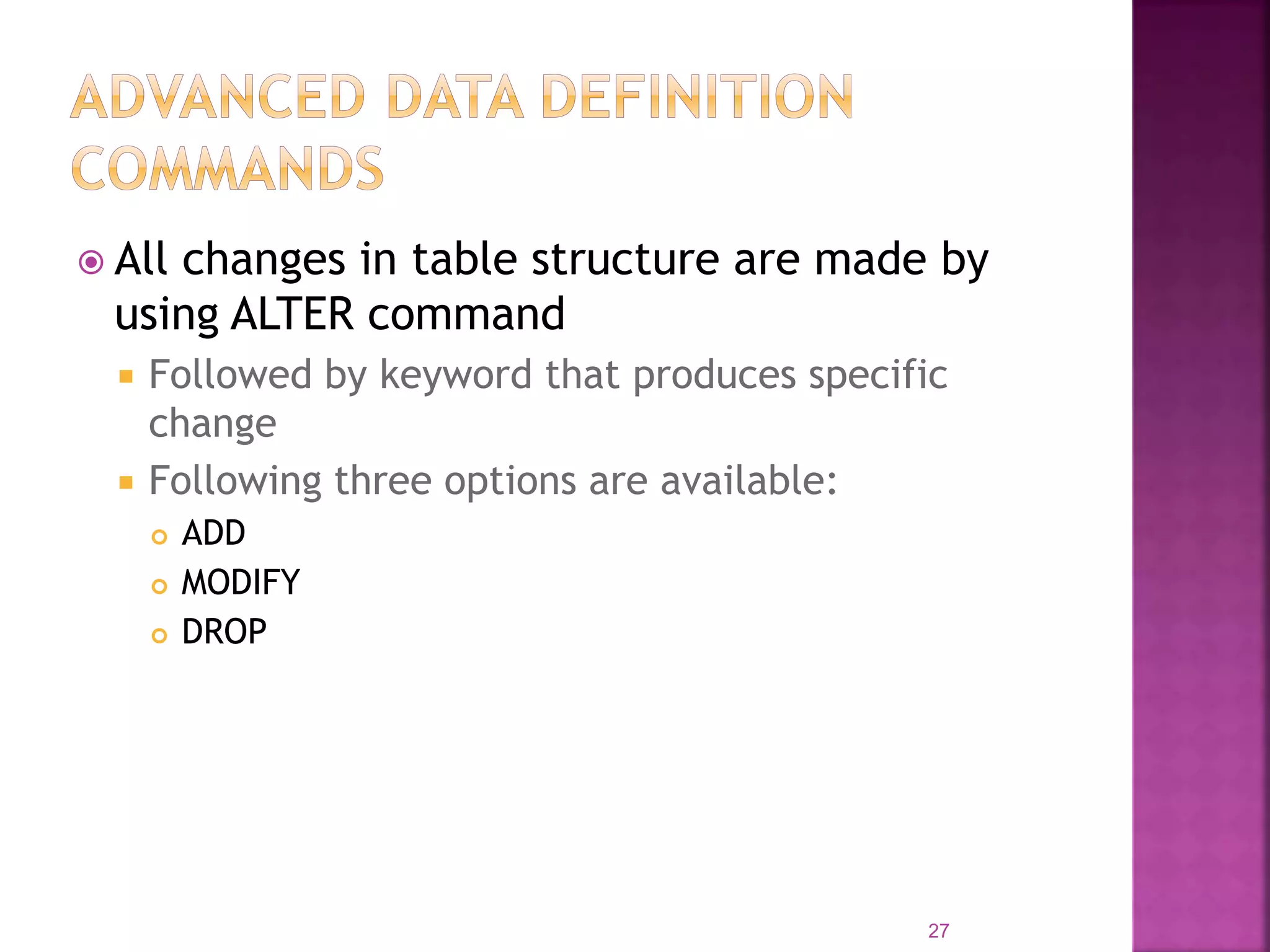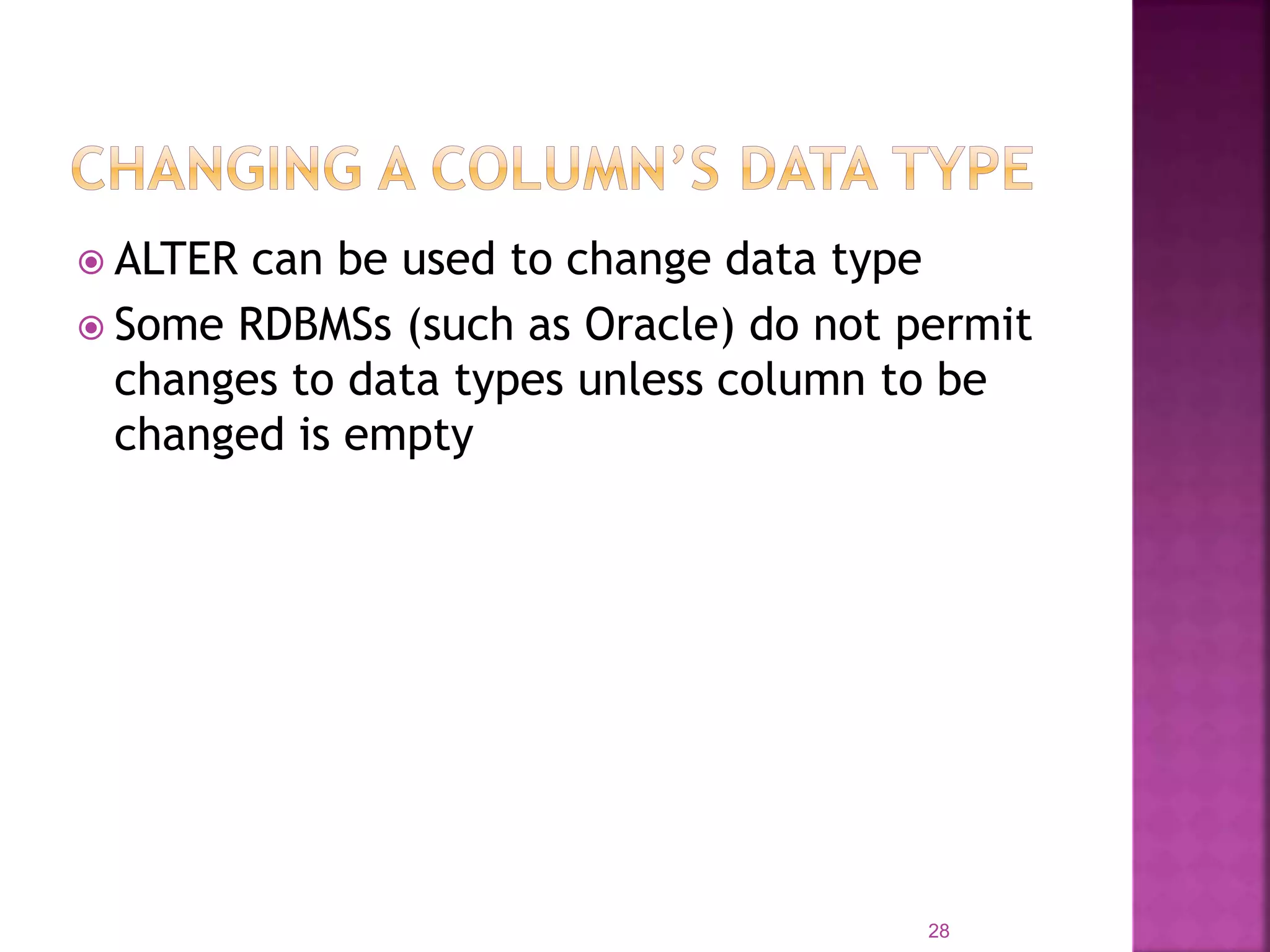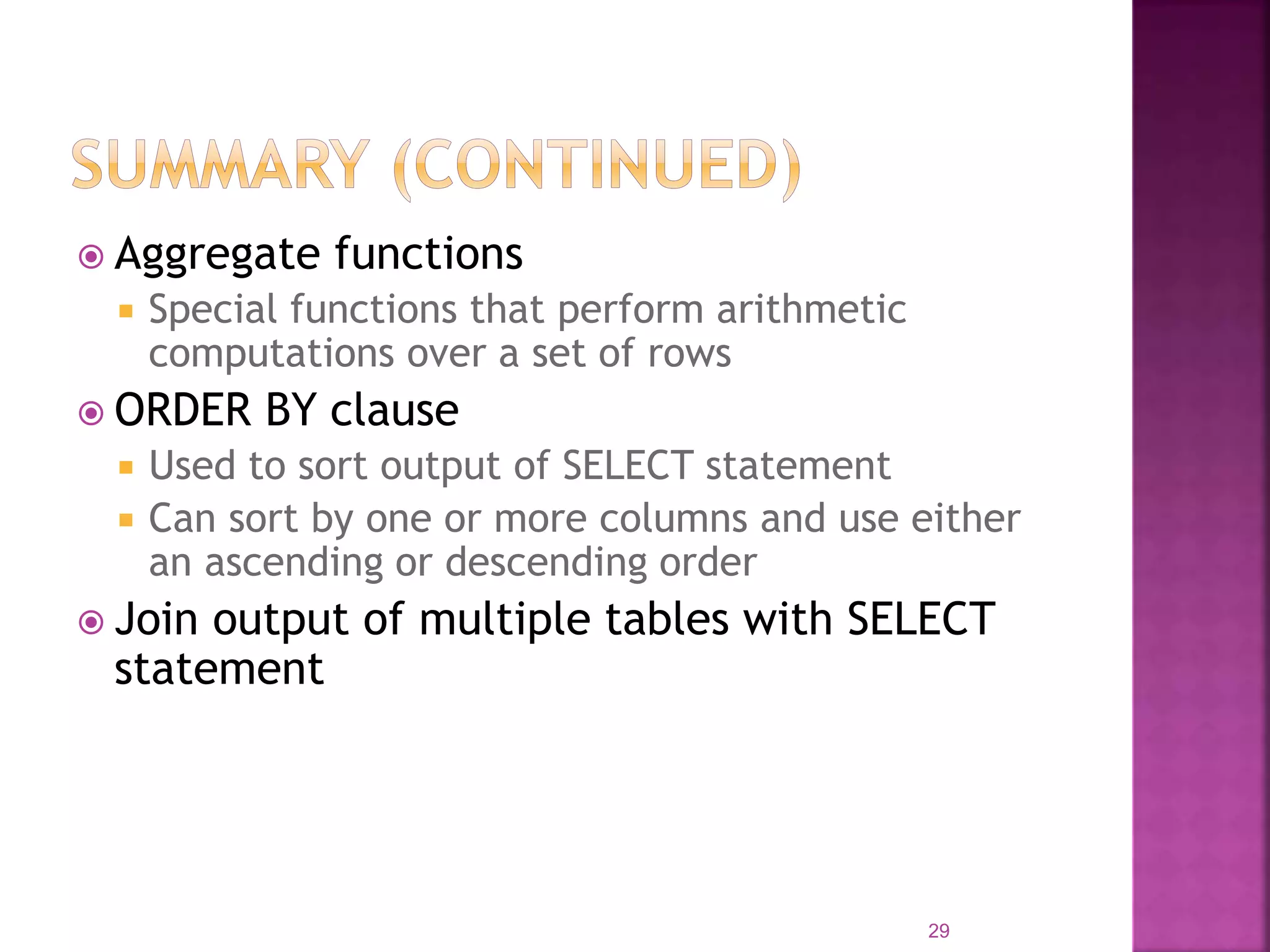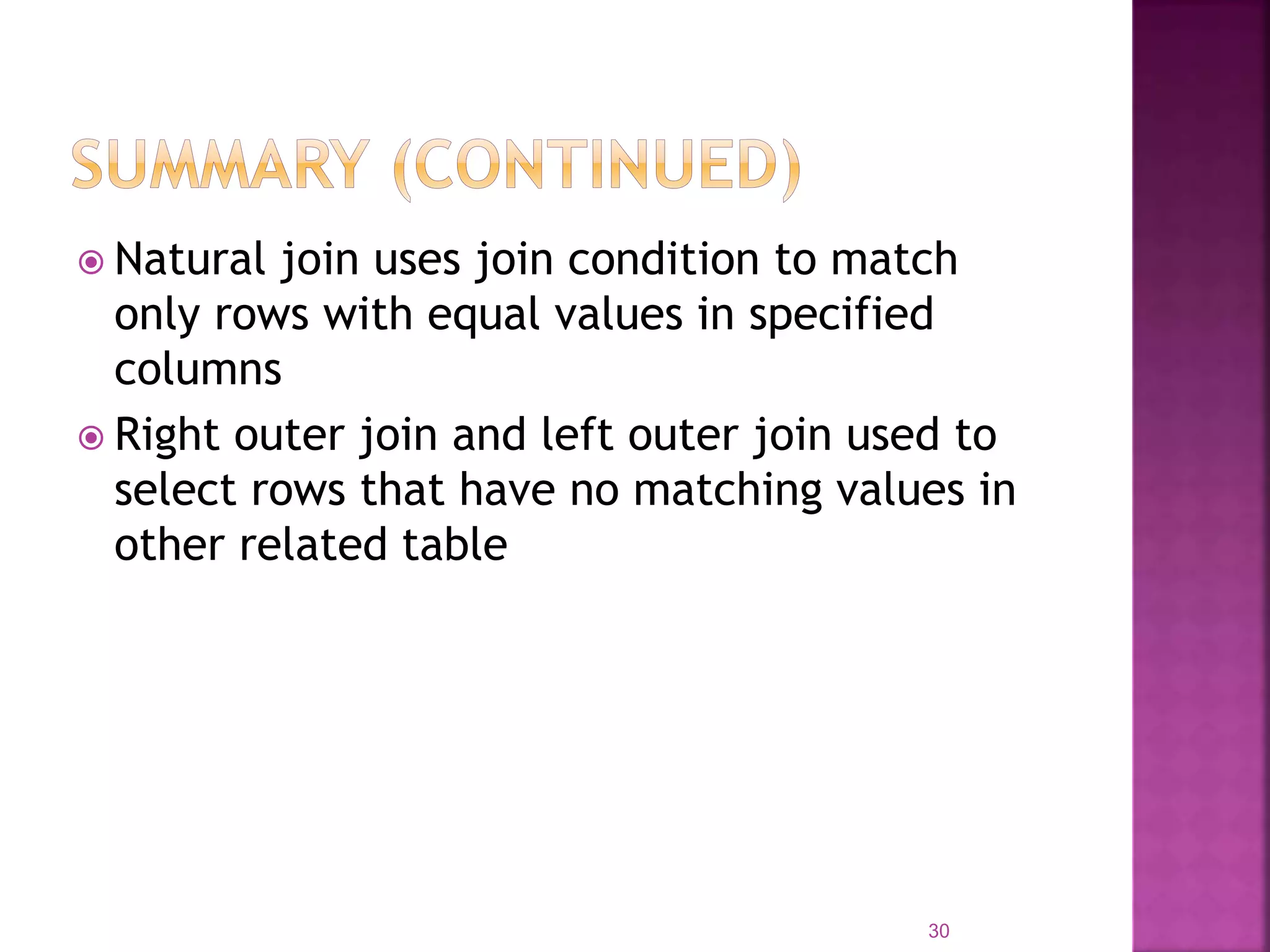The document discusses using SQL for data administration and manipulation. It covers using SQL to create tables, indexes and views, and to add, modify, delete and retrieve data. It also discusses the basics of SQL commands, data types, constraints, and how to query a database using SELECT statements with conditions like WHERE, BETWEEN, IN and EXISTS.

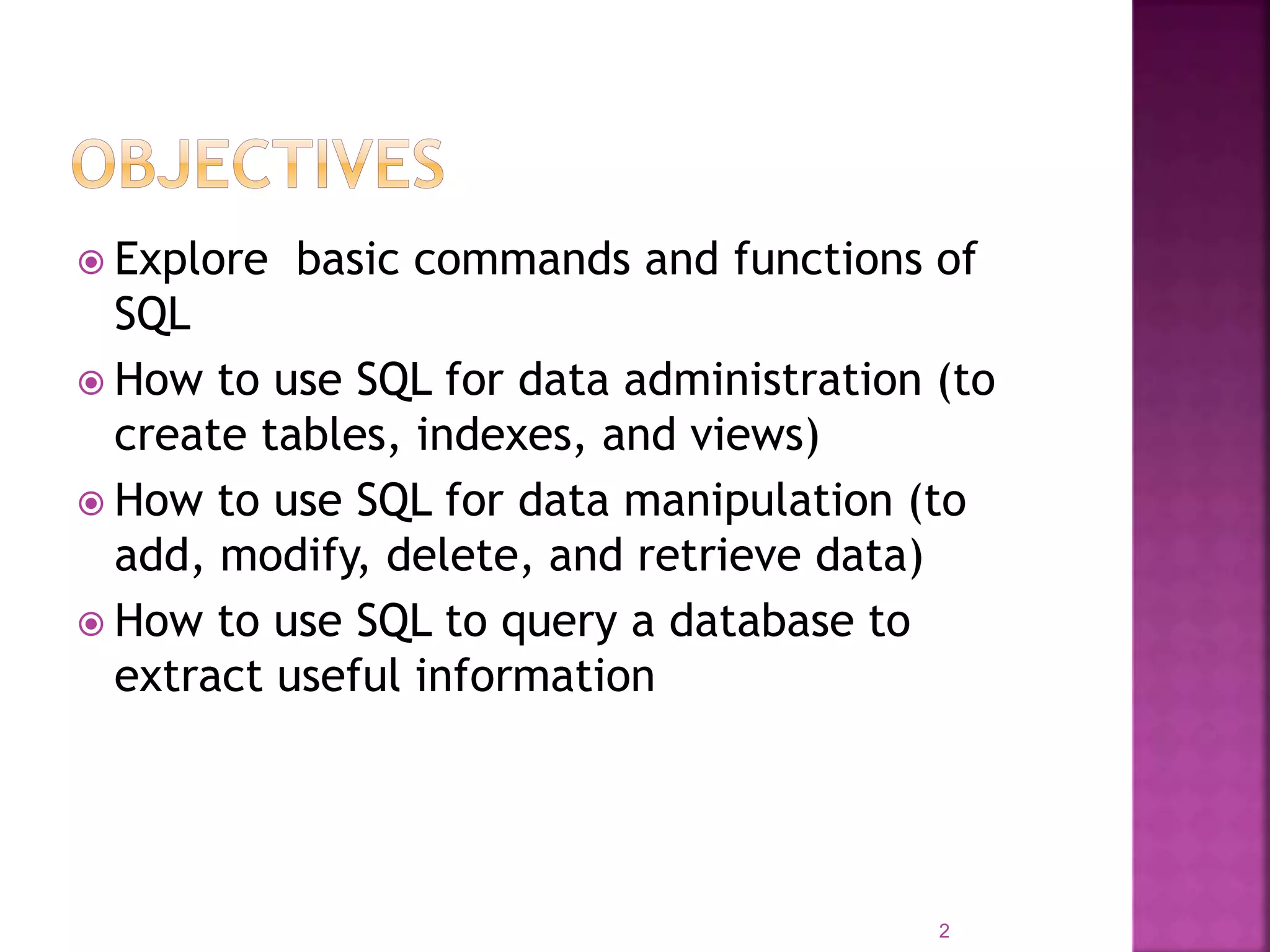
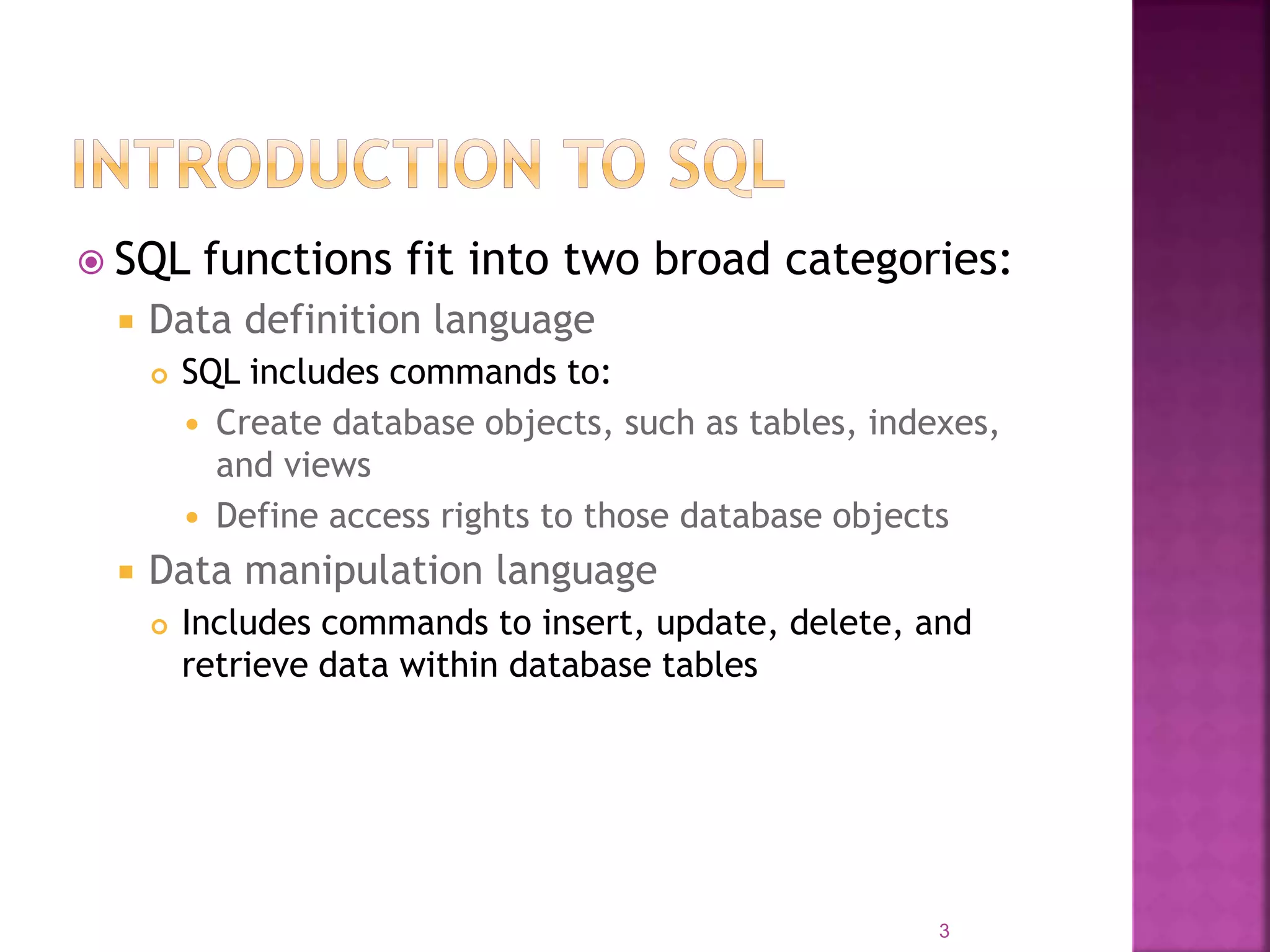

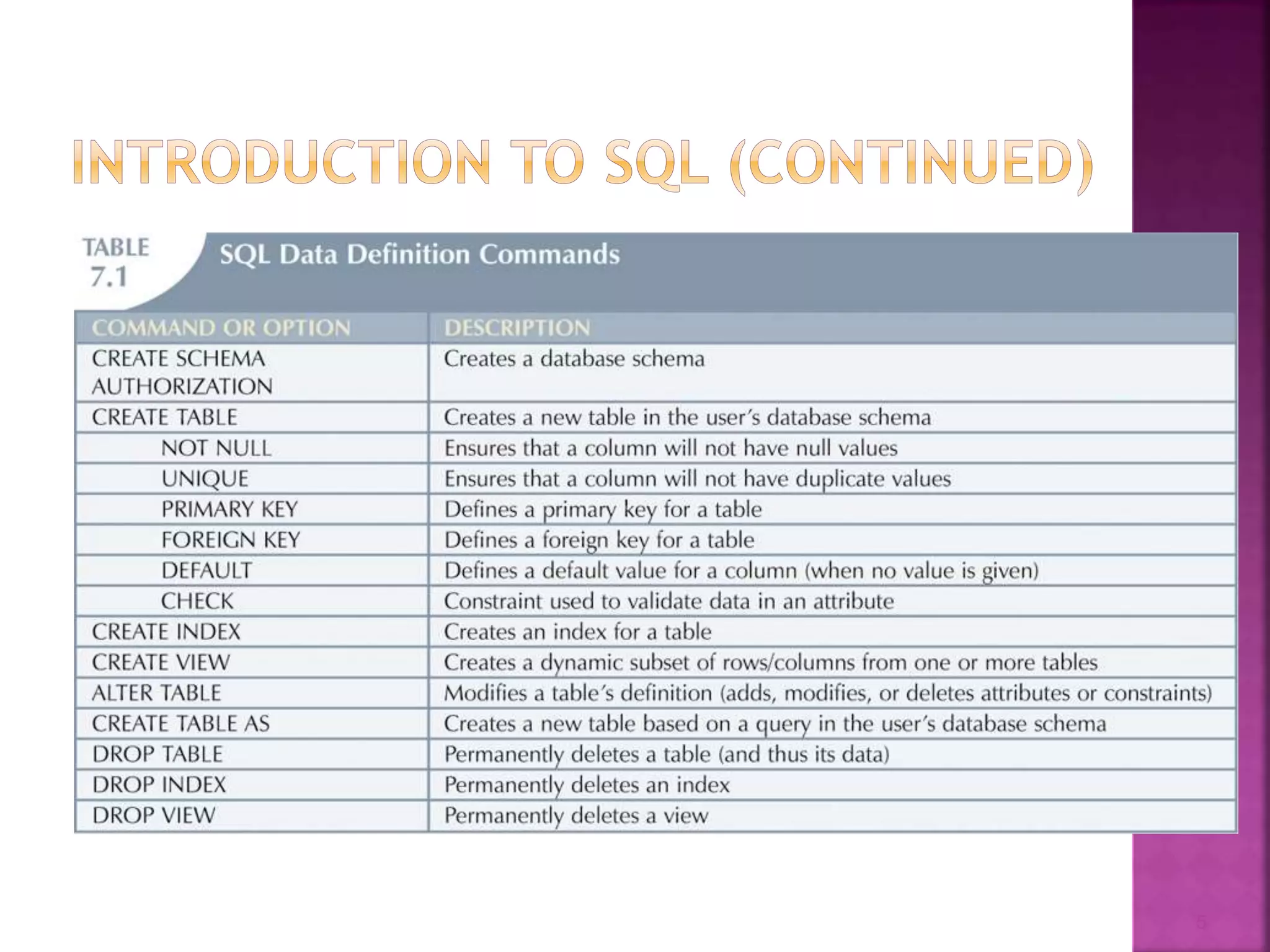
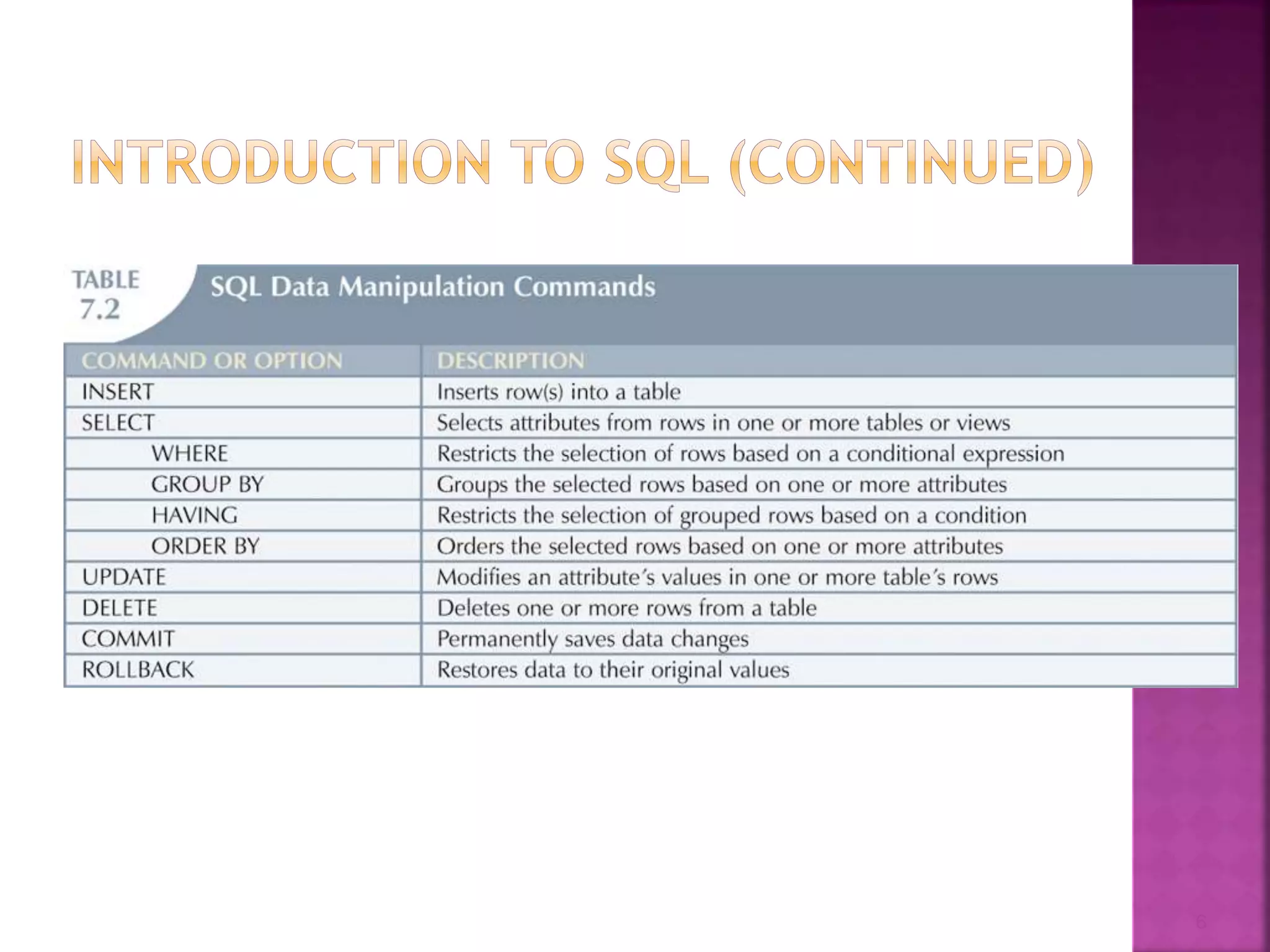
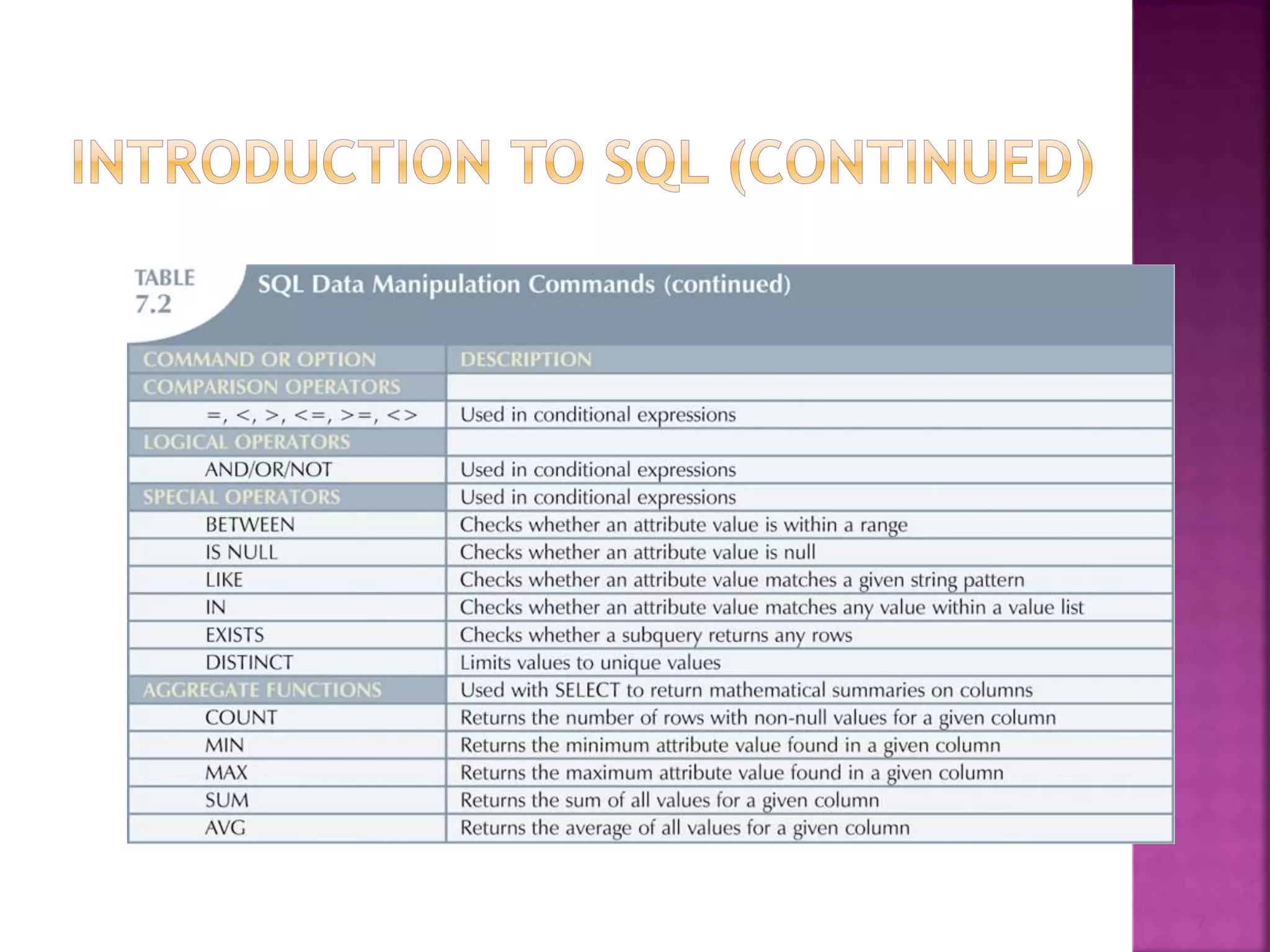
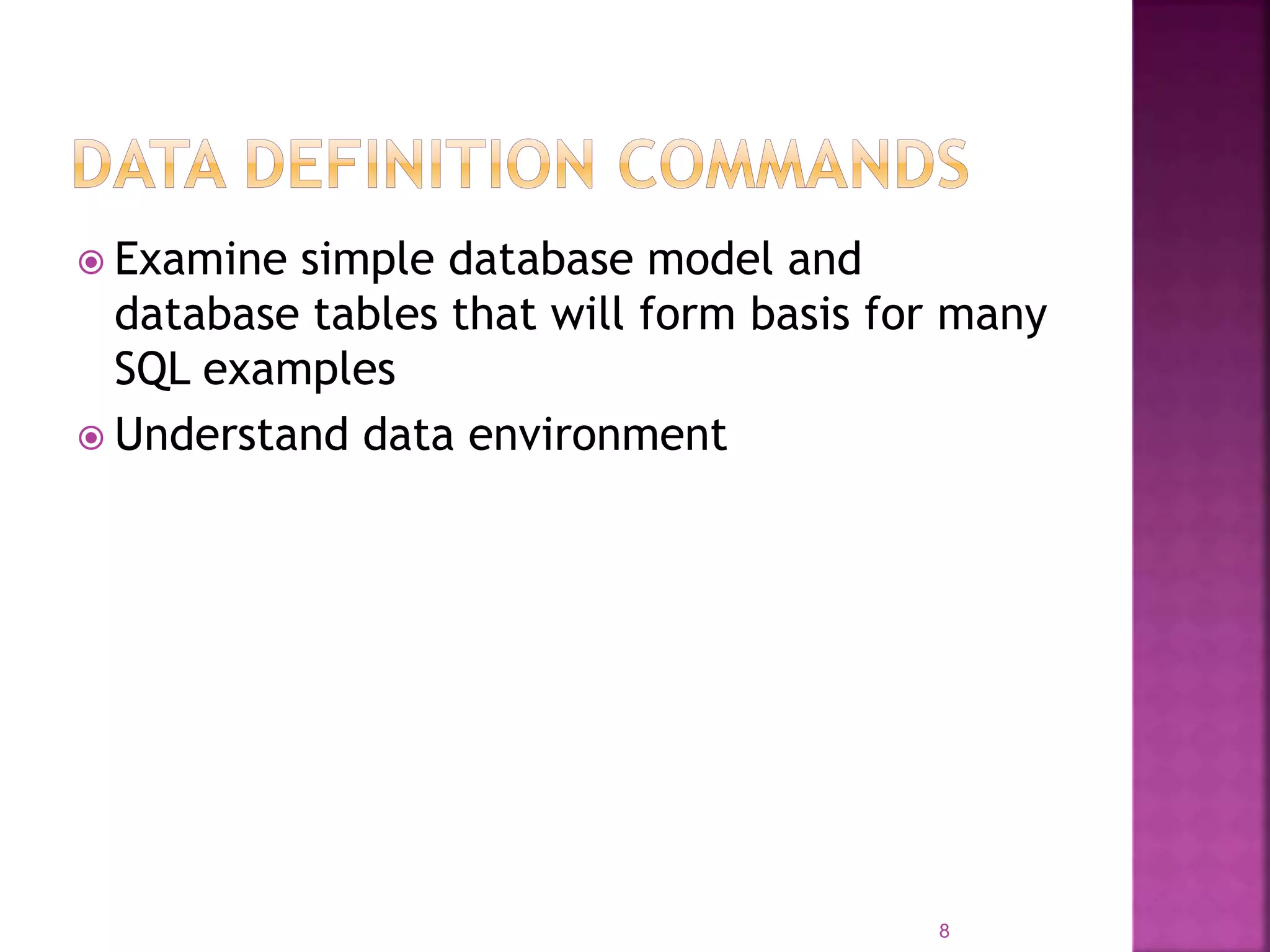
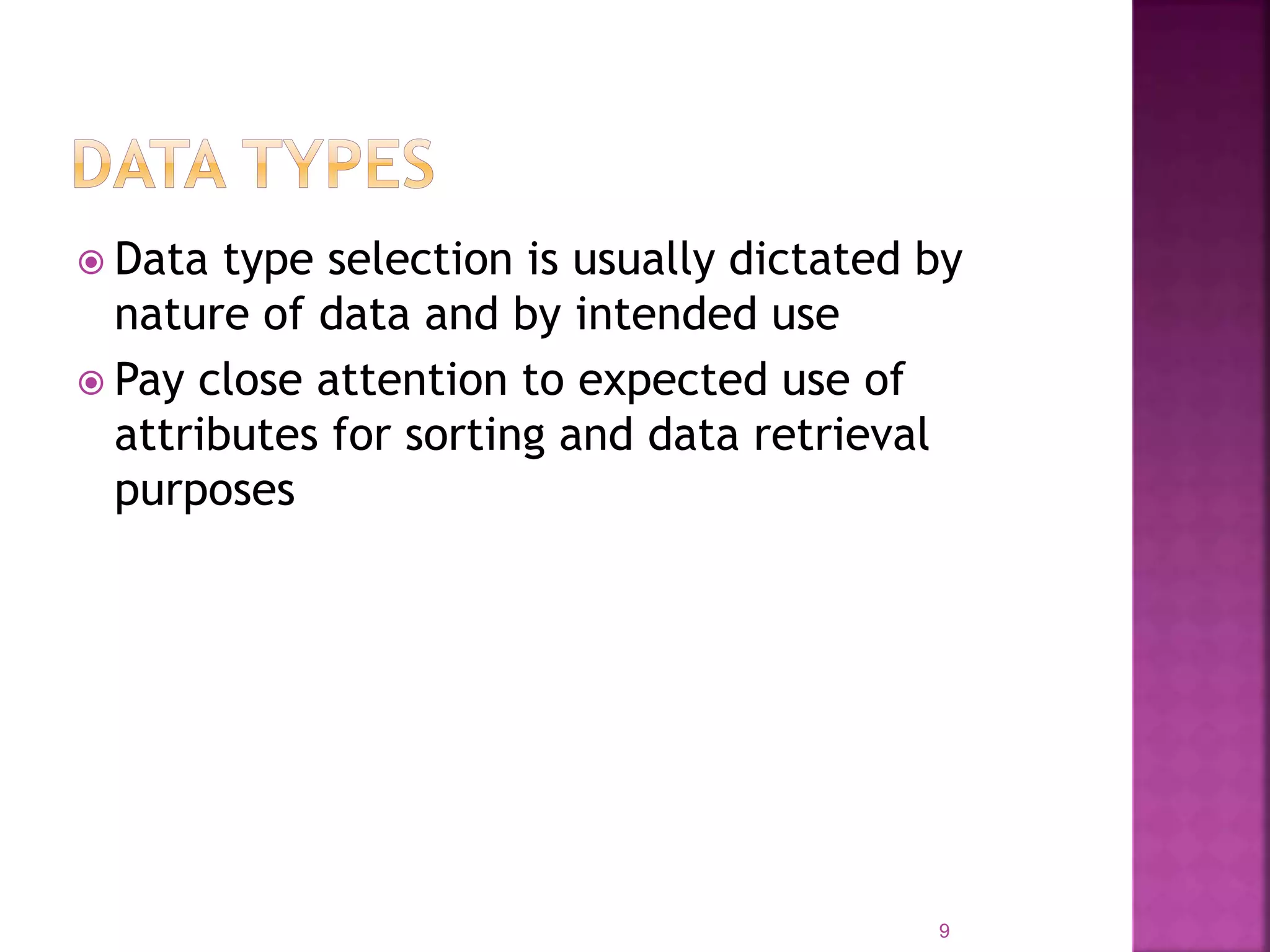
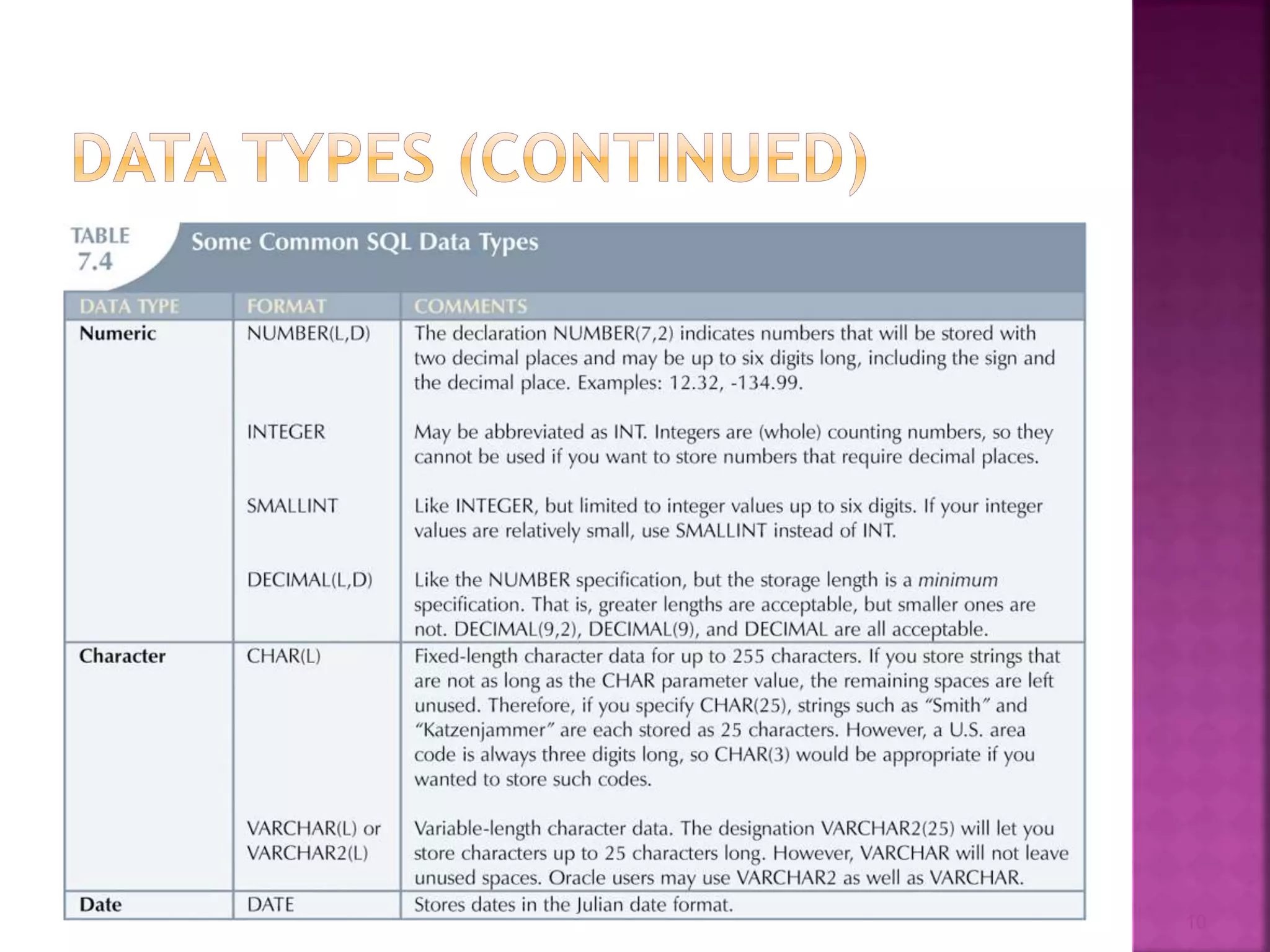
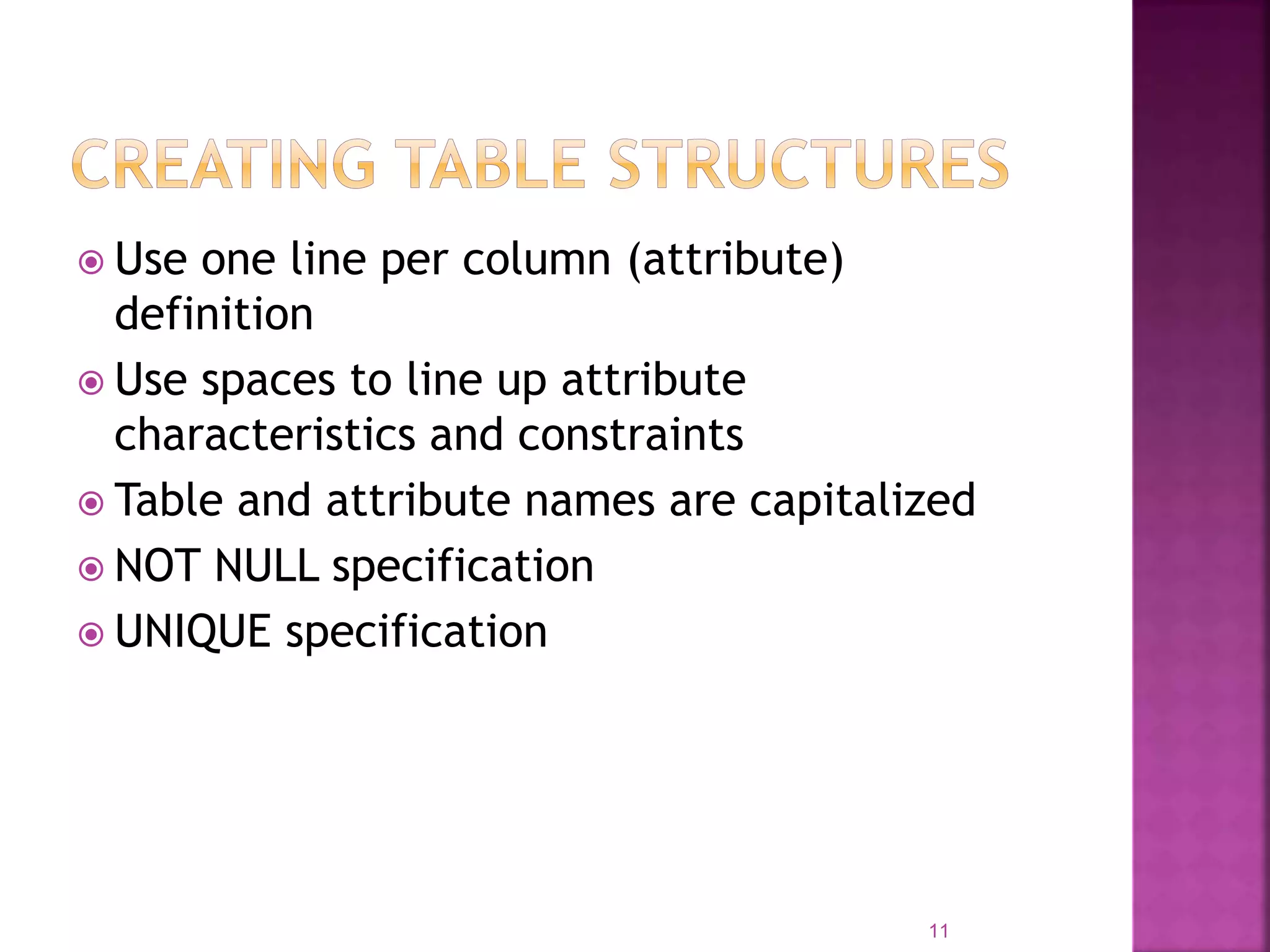
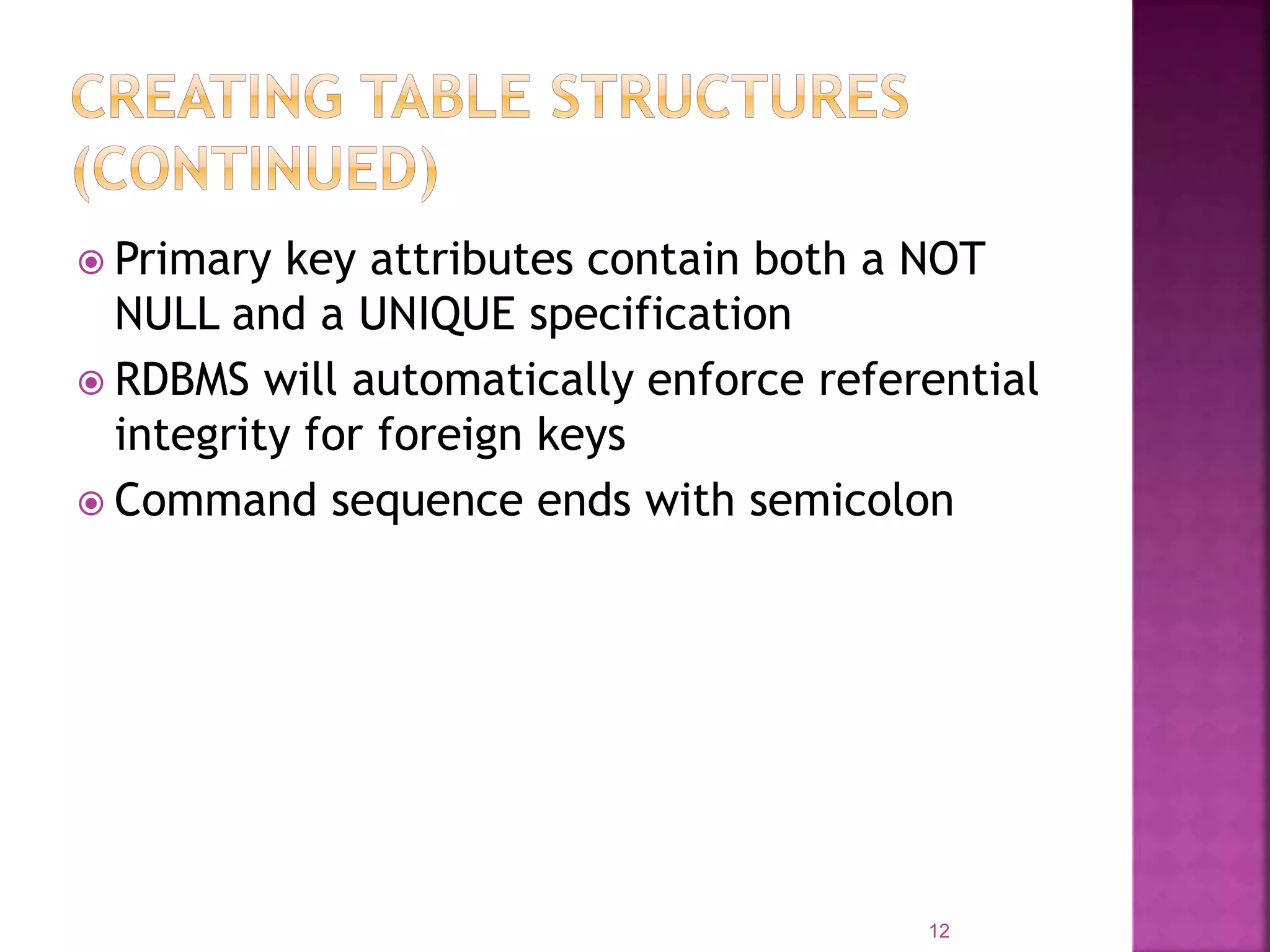
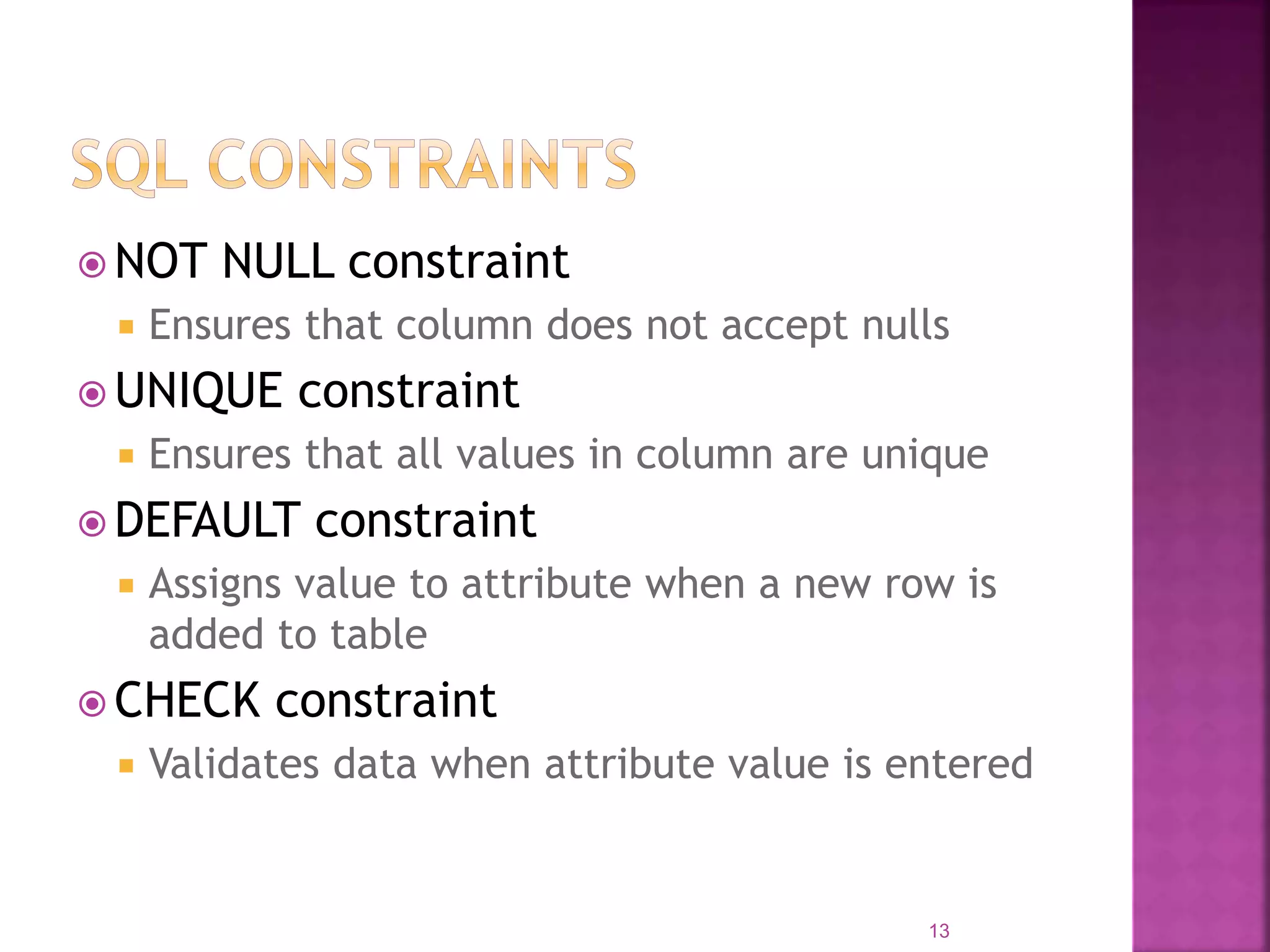
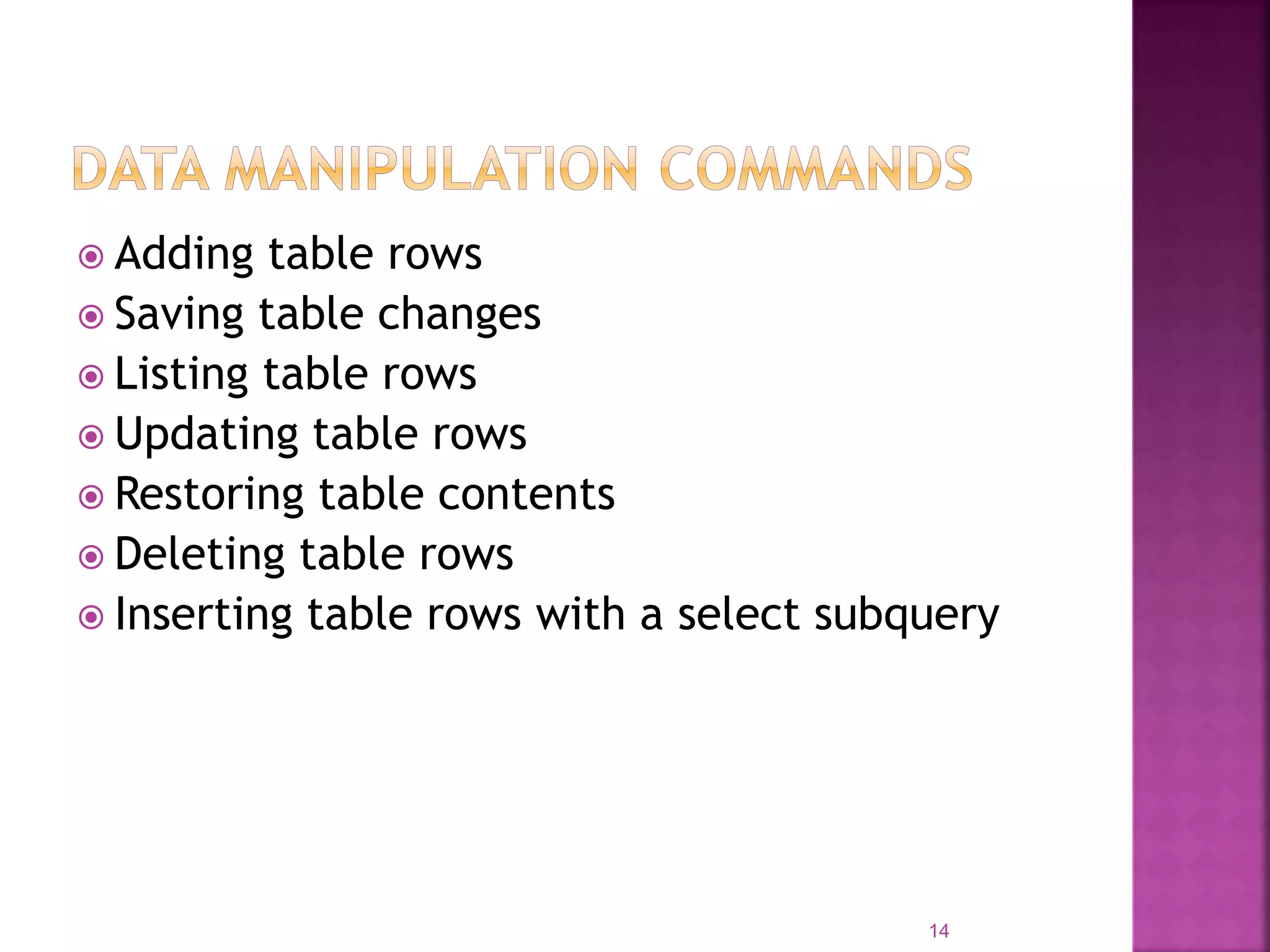
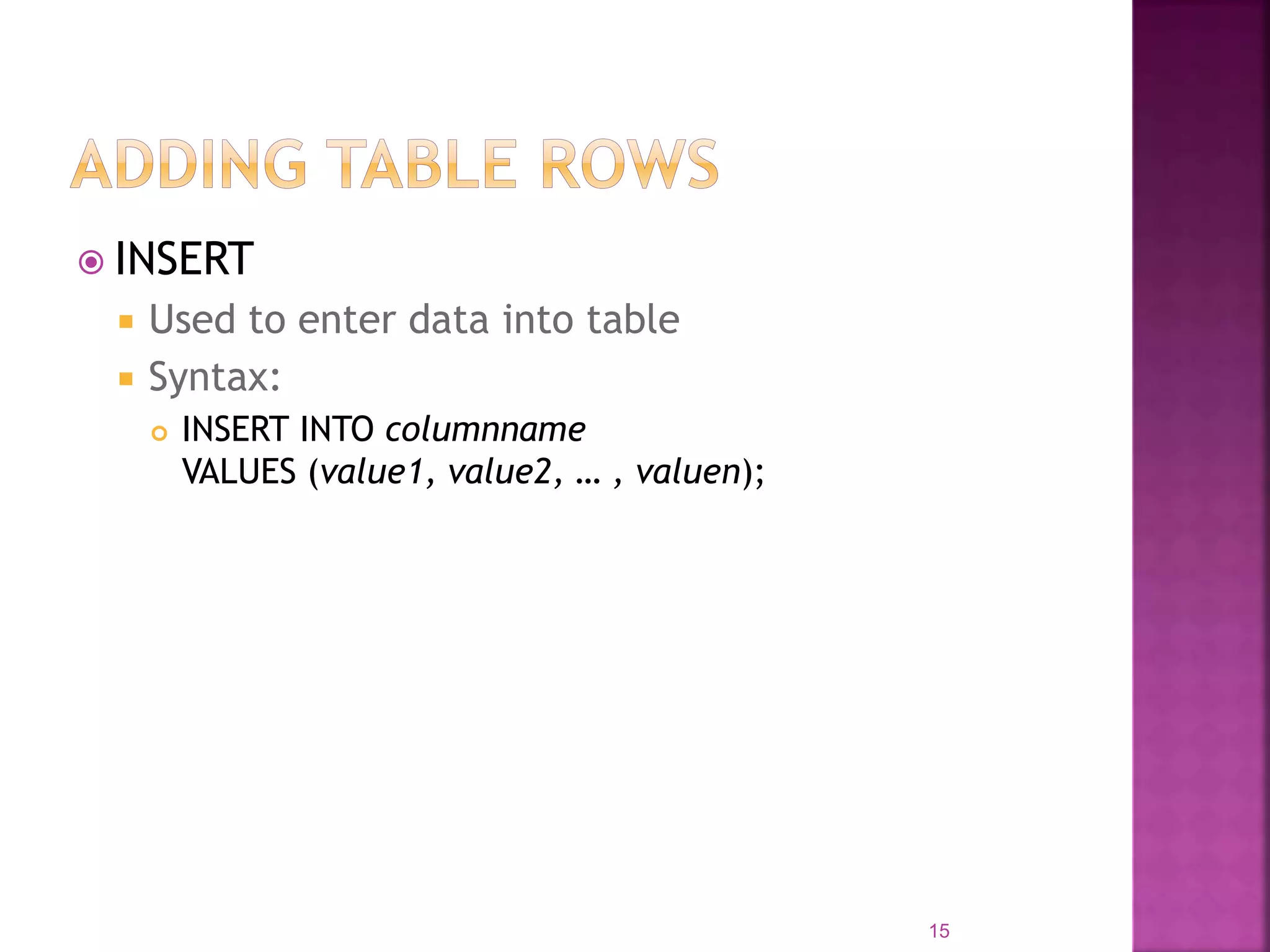
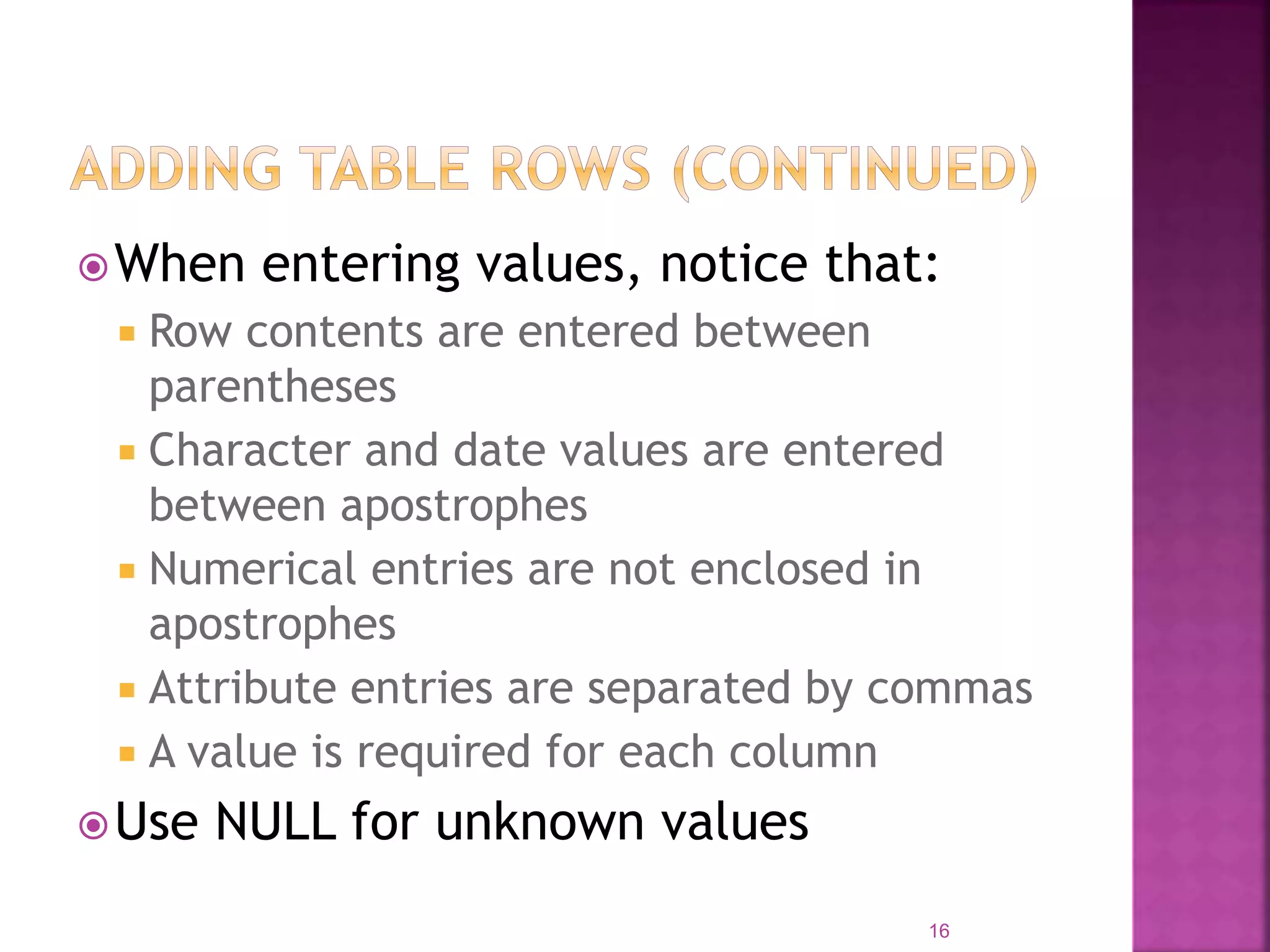
![ Changes made to table contents are not
physically saved on disk until, one of the
following occurs:
Database is closed
Program is closed
COMMIT command is used
Syntax:
COMMIT [WORK];
Will permanently save any changes made to
any table in the database
17](https://image.slidesharecdn.com/introductiontostructuredquerylanguagesql1-200506094000/75/Introduction-to-structured-query-language-sql-1-17-2048.jpg)
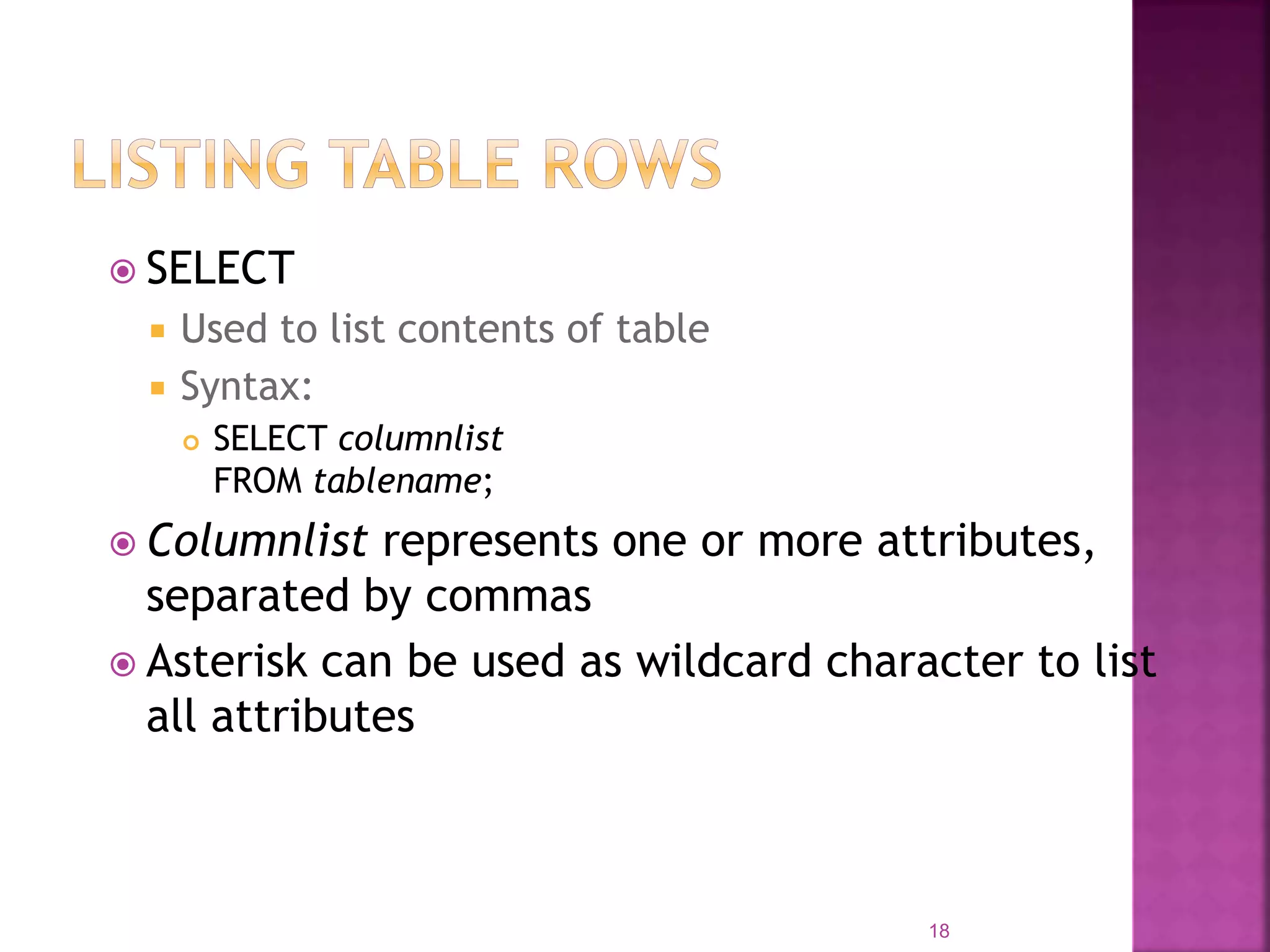
![ UPDATE
Modify data in a table
Syntax:
UPDATE tablename
SET columnname = expression [, columname =
expression]
[WHERE conditionlist];
If more than one attribute is to be updated
in row, separate corrections with commas
19](https://image.slidesharecdn.com/introductiontostructuredquerylanguagesql1-200506094000/75/Introduction-to-structured-query-language-sql-1-19-2048.jpg)
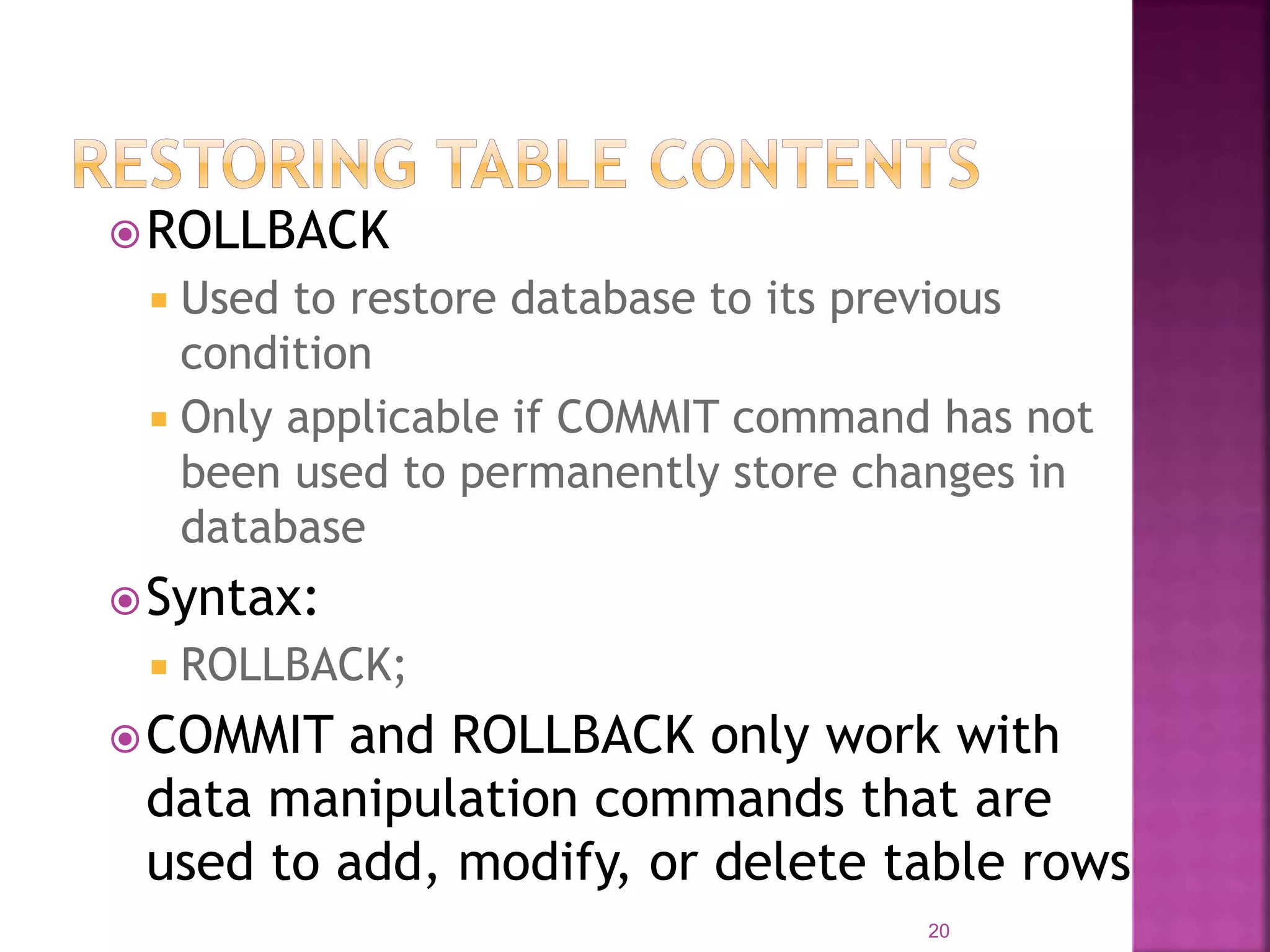
![ DELETE
Deletes a table row
Syntax:
DELETE FROM tablename
[WHERE conditionlist ];
WHERE condition is optional
If WHERE condition is not specified, all rows
from specified table will be deleted
21](https://image.slidesharecdn.com/introductiontostructuredquerylanguagesql1-200506094000/75/Introduction-to-structured-query-language-sql-1-21-2048.jpg)
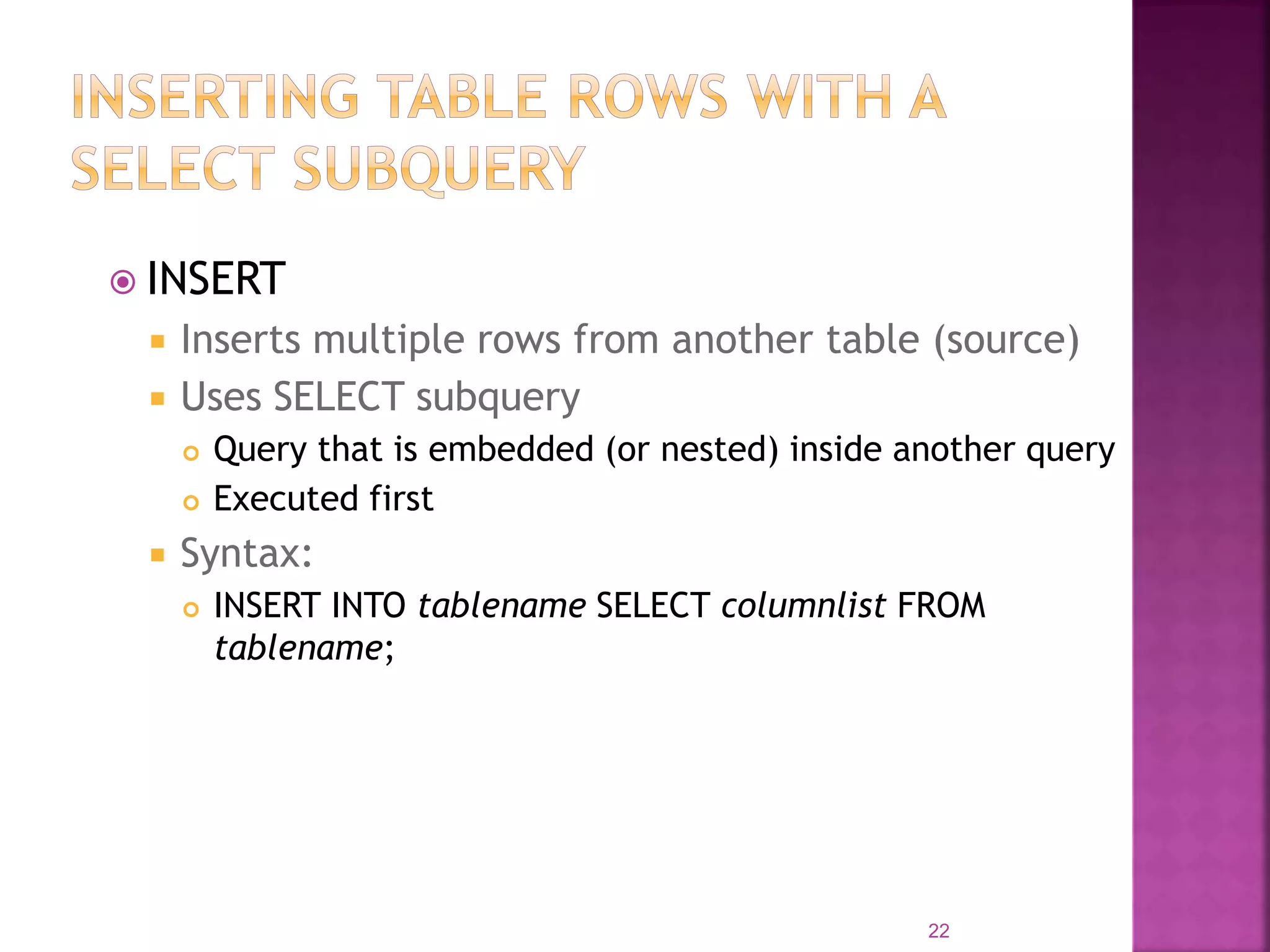
![ Select partial table contents by placing
restrictions on rows to be included in output
Add conditional restrictions to SELECT
statement, using WHERE clause
Syntax:
SELECT columnlist
FROM tablelist
[ WHERE conditionlist ] ;
23](https://image.slidesharecdn.com/introductiontostructuredquerylanguagesql1-200506094000/75/Introduction-to-structured-query-language-sql-1-23-2048.jpg)
